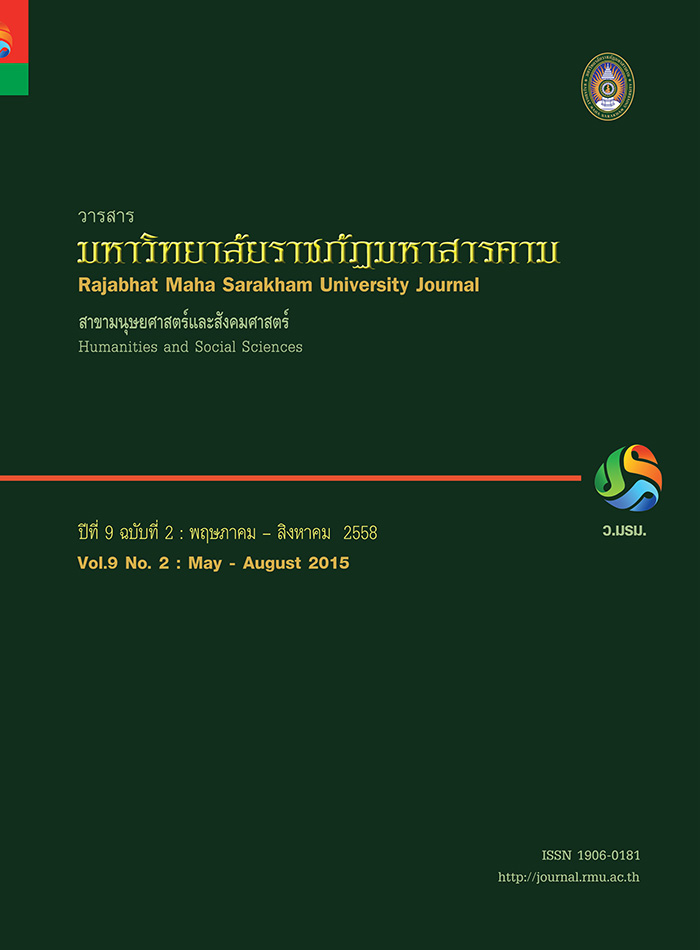Thai University Students’ Preparations for Job Opportunities: Competitiveness and Tough Competition Ahead of the Up-Coming ASEAN/AEC Integration
Main Article Content
บทคัดย่อ
Technically, the up-coming AEC will result in the free flow of skilled labor within ASEAN member
countries after it comes into full effect in 2016. As a result, skilled workers and professionals are expected to
cross borders searching for jobs and investment opportunities.
Because of this, it is undeniable that jobs competition will become fiercer within ASEAN member
countries and Thailand is no exception. In reality, countries with better education, more advances in technology
with better governance and transparency will have more advantages than less developed ones with developed
countries producing more competitive workforce rather than less developed ones. For Thai students and
graduates, once AEC takes effect, they will have to compete with skilled workers from neighboring ASEAN
peers such as Singapore, Malaysia, Myanmar, Vietnam and Cambodia not to mention the Philippines, Laos,
Indonesia and Brunei. Apparently, the eight professions and industries which have already been agreed
upon under MRAs (Mutual Recognition Arrangements) namely doctors, dentists, nurses, engineers,
accountants, architects, surveyors and tourist professionals would likely be the least affected in regard to
competition due mainly to the agreement signed. However, the undeniable fact is that the majority of Thai
students who graduated each year whose degrees are in liberal arts, social studies, humanities, political
science, mass communications, general management, physical education and other irrelevant fields, which
have only a limited number of positions available for these majors, inevitably will likely to be unemployed.
The journal was written with an aim to provide useful information and to serve as a guideline for Thai
university students and potential job seekers to use as a self-preparation source going forward. In addition,
the provided information could be served as an aid for students in selecting the right fields of study that are
suitable for the current demands within today’s jobs market, instead of choosing a field based on trends which
does not accurately reflect actual work opportunities. In addition, the content is also beneficial to general
public to consider in order to compete in this ever increasing and intensified jobs competition.
Article Details
1. บทความที่ลงตีพิมพ์ทุกเรื่องได้รับการตรวจทางวิชาการโดยผู้ประเมินอิสระ ผู้ทรงคุณวุฒิ (Peer Review) สาขาที่เกี่ยวข้อง อย่างน้อย 3 ท่าน ในรูปแบบ Double blind review
2. ข้อคิดเห็นใด ๆ ของบทความที่ลงตีพิมพ์ในวารสารมหาวิทยาลัยราชภัฏมหาสารคาม นี้เป็นของผู้เขียน คณะผู้จัดทำวารสารไม่จำเป็นต้องเห็นด้วย
3. กองบรรณาธิการวารสารมหาวิทยาลัยราชภัฏมหาสารคาม ไม่สงวนสิทธิ์การคัดลอกแต่ให้อ้างอิงแสดงที่มา


